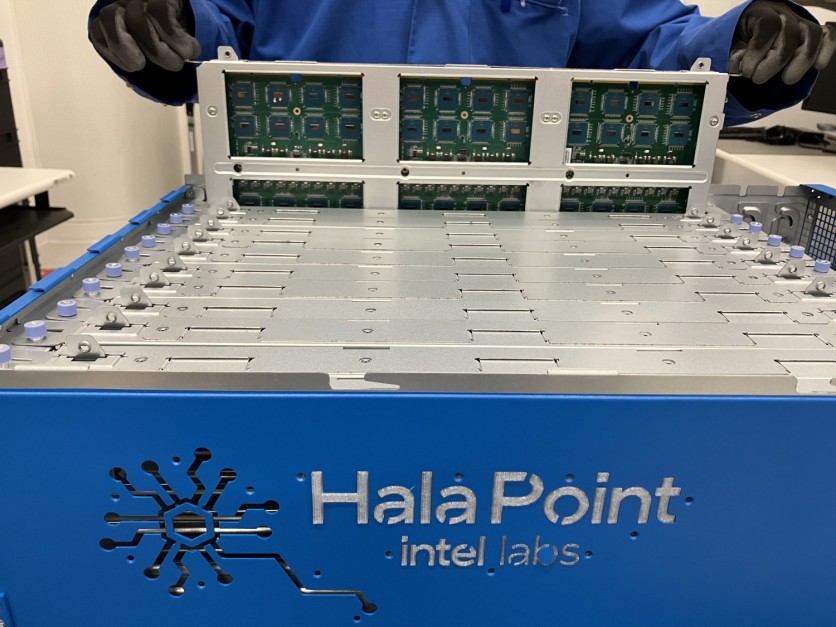Intel has announced the development of Hala Point, touted as the world's largest neuromorphic system, aimed at advancing sustainable artificial intelligence (AI).

Intel Unveils Hala Point
This system leverages Intel's Loihi 2 processor and is initially deployed at Sandia National Laboratories. The primary objective behind this endeavor is to support research in brain-inspired AI and address the efficiency and sustainability challenges prevalent in today's AI landscape.
Hala Point represents a significant advancement over Intel's first-generation large-scale research system, Pohoiki Springs, boasting architectural improvements that enable over 10 times more neuron capacity and up to 12 times higher performance.
"The computing cost of today's AI models is rising at unsustainable rates. The industry needs fundamentally new approaches capable of scaling. For that reason, we developed Hala Point, which combines deep learning efficiency with novel brain-inspired learning and optimization capabilities," Mike Davies, the director of the Neuromorphic Computing Lab at Intel Labs, said in a press release statement.
"We hope that research with Hala Point will advance the efficiency and adaptability of large-scale AI technology."
Hala Point can support up to 20 quadrillion operations per second, with an efficiency exceeding 15 trillion 8-bit operations per second per watt. These capabilities rival and surpass those achieved by architectures built on graphics processing units (GPU) and central processing units (CPU), according to Intel.
Hala Point promises to enable real-time continuous learning in AI applications across various domains, including scientific and engineering problem-solving, logistics, smart city infrastructure management, large language models (LLMs), and AI agents.
Advancing Brain-Scale Computing
Sandia National Laboratories plans to utilize Hala Point for advanced brain-scale computing research, focusing on scientific computing problems in device physics, computer architecture, computer science, and informatics.
The organization aims to keep pace with AI's evolution across commercial, defense, and basic science domains by leveraging a system of this size.
Hala Point is still a research prototype designed to advance the capabilities of future commercial systems. Intel said that the lessons learned from Hala Point will lead to practical advancements, such as the ability for LLMs to learn continuously from new data.
Hala Point builds upon the success of its predecessor, Pohoiki Springs, by delivering neuromorphic performance and efficiency gains to mainstream conventional deep learning models.
This advancement holds implications for real-time workloads such as video processing, speech recognition, and wireless communications, according to Intel.
Hala Point, based on Loihi 2 neuromorphic processors, integrates brain-inspired computing principles to achieve orders-of-magnitude gains in energy consumption and performance.
The system is housed in a six-rack-unit data center chassis and supports up to 1.15 billion neurons and 128 billion synapses. Its architecture facilitates massively parallelized processing, providing substantial memory bandwidth and communication capabilities.
"The delivery of Hala Point to Sandia National Labs marks the first deployment of a new family of large-scale neuromorphic research systems that Intel plans to share with its research collaborators. Further development will enable neuromorphic computing applications to overcome power and latency constraints that limit AI capabilities' real-world, real-time deployment," Intel said in an official statement.
Related Article : Intel Lags Behind Chip-Making Industry, Reports $7 Billion Loss

![Apple Watch Series 10 [GPS 42mm]](https://d.techtimes.com/en/full/453899/apple-watch-series-10-gps-42mm.jpg?w=184&h=103&f=9fb3c2ea2db928c663d1d2eadbcb3e52)



